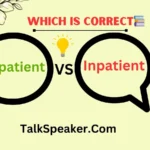The term “basically” is a staple in everyday language, often used to simplify or summarize statements. But is it always correct or appropriate to use? In this blog post, we’ll delve into the nuances of using “basically,” exploring its definition, common misuses, and the contexts where it’s most effective.
We’ll also examine expert opinions and linguistic trends to understand how “basically” fits into modern language.
The Definition of “Basically”
Lexical Definition
According to the Oxford English Dictionary, the word “basically” is an adverb used to indicate that something is true in the most fundamental or essential aspects, though there may be other considerations or complexities. For example, if someone says, “Basically, the project is finished,” they mean that the essential components of the project are complete, even if there are minor details left to address.
Usage in Context
Here are a few examples to illustrate typical use:
- “The new policy, basically, simplifies the approval process.”
- “She explained, basically, how the system works in three easy steps.”
In these sentences, “basically” serves to distill complex information into a simpler form.
Origin and Evolution
The term “basically” has its roots in the early 19th century, evolving from the adjective “basic.” Originally, it was used to denote something fundamental or foundational. Over time, its usage expanded to include a summarizing function in conversational language, which is why it is often seen in informal speech and writing today.
Common Misuses of “Basically”
Overuse
One common misuse of “basically” is its overuse, which can lead to redundant or unnecessary simplification. For instance, in the sentence, “Basically, we need to finish this task quickly, basically,” the repetition of “basically” serves no purpose and detracts from the clarity of the message.
Ambiguity
Another issue arises when “basically” is used to introduce vague or ambiguous statements. For example:
- “Basically, things didn’t go as planned.”
This sentence doesn’t specify what went wrong or how things deviated from the plan. The use of “basically” here does not add clarity and may leave readers or listeners confused about the details.
Examples
To see these misuses in action:
- “Basically, the car is red, but it’s not really red.”
- “He basically said he didn’t want to go, but I’m not sure.”
In both examples, “basically” adds little value and could be omitted for clearer communication.
When and How to Use “Basically” Correctly
Appropriate Contexts
“Basically” is best used when summarizing complex information or when the fundamental aspects of a topic are being communicated. It’s particularly useful in informal contexts where a straightforward explanation is needed. For example:
- “The instructions, basically, are to fill out the form and submit it by Friday.”
- “The new app is basically an improved version of the old one with better features.”
Alternative Phrases
To avoid over-reliance on “basically,” consider these alternatives:
- In essence
- Fundamentally
- Essentially
- To put it simply
These phrases can convey similar meanings while adding variety and precision to your communication.
Examples
Here’s how you might use alternatives:
- “In essence, the new policy aims to improve employee satisfaction.”
- “To put it simply, the team needs more resources to meet the deadline.”
These alternatives often provide clearer or more precise explanations.
Language Evolution and Changing Usage
Language Trends
Language is constantly evolving, and the usage of “basically” reflects broader trends in informal communication. As language becomes more fluid, the boundaries of acceptable usage expand. “Basically” often serves as a conversational filler or a way to simplify explanations, particularly in casual settings.
Acceptability
While traditional grammar rules might frown upon frequent use of “basically,” modern usage reflects a more relaxed approach. In everyday conversation and informal writing, using “basically” is generally acceptable as long as it doesn’t lead to ambiguity or redundancy.
Expert Opinions and Linguistic Perspectives
Linguists’ Views
Linguists recognize that “basically” serves a useful purpose in communication by summarizing or simplifying information. However, they also caution against its overuse, which can lead to unclear or imprecise statements. Dr. John McWhorter, a linguist at Columbia University, notes that while “basically” is a valid tool for simplifying explanations, it should be used judiciously to maintain clarity.
Grammar Guides
According to the Chicago Manual of Style, “basically” should be used when it genuinely simplifies or clarifies complex information. The guide advises against using it excessively or in a way that obscures meaning.
Conclusion
Summary
In summary, “basically” is a useful term for simplifying or summarizing information. However, its effectiveness depends on context and usage. When used appropriately, it can clarify complex ideas. When overused or misapplied, it can lead to ambiguity and redundancy.
Final Thoughts
While “basically” can be a helpful linguistic tool, it’s important to use it with intention. Being mindful of when and how you use “basically” can enhance your communication, making it clearer and more effective.

Sophie Mitchell, a seasoned English educator, brings her passion for language and years of teaching expertise to TalkSpeaker. With a knack for simplifying grammar and expanding vocabulary, she empowers learners to master English with confidence.




